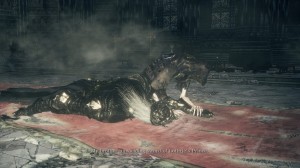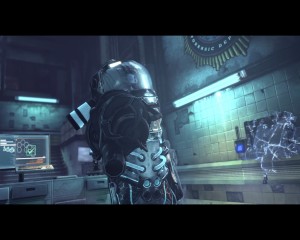Boss battle design is another topic that there aren’t too many pieces on. Many games either rise or fall thanks to their boss fights, especially the final fight. For this first of two parts, I want to examine three essential elements that make up every great boss in game design.
As we’ve seen over the years, it’s possible to have a boss in just about any kind of design. The sheer number and variety of fights can make it hard to distill what makes the best ones stand out. For me, there are three elements that I use. A good boss should have at least two, while the best have all three.
Because this is a two-parter, I’m going to try and not post game examples. We’ll be talking about games and specific bosses in part two.
The Setting:
Environmental design is a huge factor for bosses. Many great boss designs either have their personality be a part of the setting, or their abilities make use of their surroundings. The balance has to be on point here: The enemy should have an advantage or make use of the environment, but not to the point that the player is severely handicapped.
If the player can use the environment to their own needs without breaking the fight, so much the better. From a narrative point of view, the setting should reflect some aspect of the boss itself.
Even if the environment itself doesn’t impact fighting them, it can still represent them in terms of design. You can see both cases in Furi, and how the environments represent the bosses and their abilities.
Even though the setting is important, we also need to talk about what’s going on in the game.
The Weight of the Situation:
In the past, many boss fights had no rhyme or reason to their appearance in a game. With game narratives improving over the years, it’s important to look at how a boss fits into the game. They could be a former friend turned rival, a lieutenant hunting the player and so on. If you want your game’s story to resonate, then bosses have to mean something to the player.
There is a reason why the Sephiroth final boss fight stuck out to fans of the Final Fantasy 7: It was a long time coming teased throughout the entire game. Good game design in this case is avoiding having bosses that appeared to have been plopped down from nowhere.
Gamers complained about Dark Souls 2 regarding the quality and lore of many of the boss fights. The smelter demon boss fight was repeated in the main game and in the DLC content.
Repeating boss fights has to be handled carefully by your game’s lore. No one likes to repeat content, especially bosses they already fought.
Finally, we come to the main event, the actual boss fight itself.
Fight Time:
As we mentioned already, boss designs vary base on genre and design. However, there is one quality shared among the best fights: The player is tested by them. Great boss design asks the player to up their game in some aspect. This could mean stealth sections, puzzles, fighting and more. The point is that the boss fight should not be just like every other fight in the game.
One exception to the test scenario is if the boss is designed around a special gimmick or twist. Some examples would be the Scarecrow sections in Batman Arkham Asylum or Metal Gear Solid 3’s The Sorrow fight. With that said, there is one important part of all good boss fight battles.
Memorable bosses are designed around one encounter and that’s it. Unless you’re doing a “boss rush” mode for your game, bosses should not be repeated in other parts of the game. If you want to feature escalated enemies that appear frequently, make them mini-bosses. Repeating the same fight will dilute the experience and is seen as padding out the game.
There’s one last detail I want to talk about regarding boss design. If your game is built on abstracted rules or systems, like RPG or puzzle, you need to be mindful of any special advantages you give them.
It can be seen as cheap design to allow the boss to circumvent the rules or mechanics of the game unless it’s handled carefully.
Many RPGs have bosses who are immune to all status effects and debuffs; rendering a large portion of the player’s options useless.
Another case would be the boss having a special attack that breaks the rules of the game; IE: An attack that does more damage than the possible max health of the player.
On With the Show:
This is going to be a quick piece, as the next part is going to focus specifically on some of my favorite boss fights in a game.
To wrap it up, boss design requires the designer to think outside of the box. As we’ve seen over the years, you can have a “boss fight” for just about every genre; yes, even puzzle games. A great boss fight can be the ribbon on a great game, or it can leave a sour note to end on.
Next time, I’ll talk about those great fights.
If you enjoyed this post, please consider donating to the Game-Wisdom Patreon campaign. Your donations can help to keep the site going and allow me to produce more great content. Follow me on Twitter @GWBycer, and you can find daily video content on the Game-Wisdom YouTube channel.





